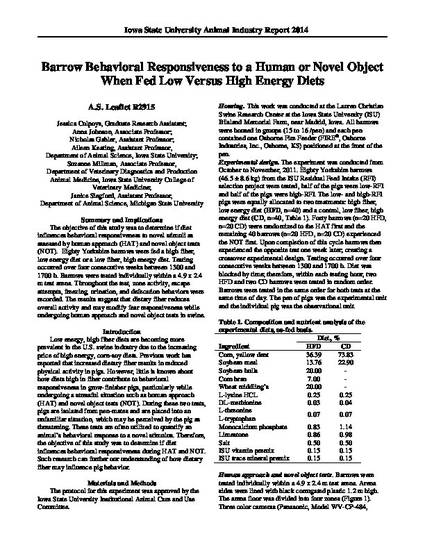
Article
Barrow Behavioral Responsiveness to a Human or Novel Object When Fed Low Versus High Energy Diets
Animal Industry Report
Extension Number
ASL R2915
Publication Date
2014
Disciplines
Topic
Swine
Summary and Implications
The objective of this study was to determine if diet influences behavioral responsiveness to novel stimuli as assessed by human approach (HAT) and novel object tests (NOT). Eighty Yorkshire barrows were fed a high fiber, low energy diet or a low fiber, high energy diet. Testing occurred over four consecutive weeks between 1300 and 1700 h. Barrows were tested individually within a 4.9 x 2.4 m test arena. Throughout the test, zone activity, escape attempts, freezing, urination, and defecation behaviors were recorded. The results suggest that dietary fiber reduces overall activity and may modify fear responsiveness while undergoing human approach and novel object tests in swine.
Copyright Holder
Iowa State University
Copyright Date
2014
DOI
https://doi.org/10.31274/ans_air-180814-1199
Language
en
Citation Information
Jessica D. Colpoys, Anna K. Johnson, Nicholas K. Gabler, Aileen F. Keating, et al.. "Barrow Behavioral Responsiveness to a Human or Novel Object When Fed Low Versus High Energy Diets" (2014) Available at: http://works.bepress.com/aileen-keating/2/
